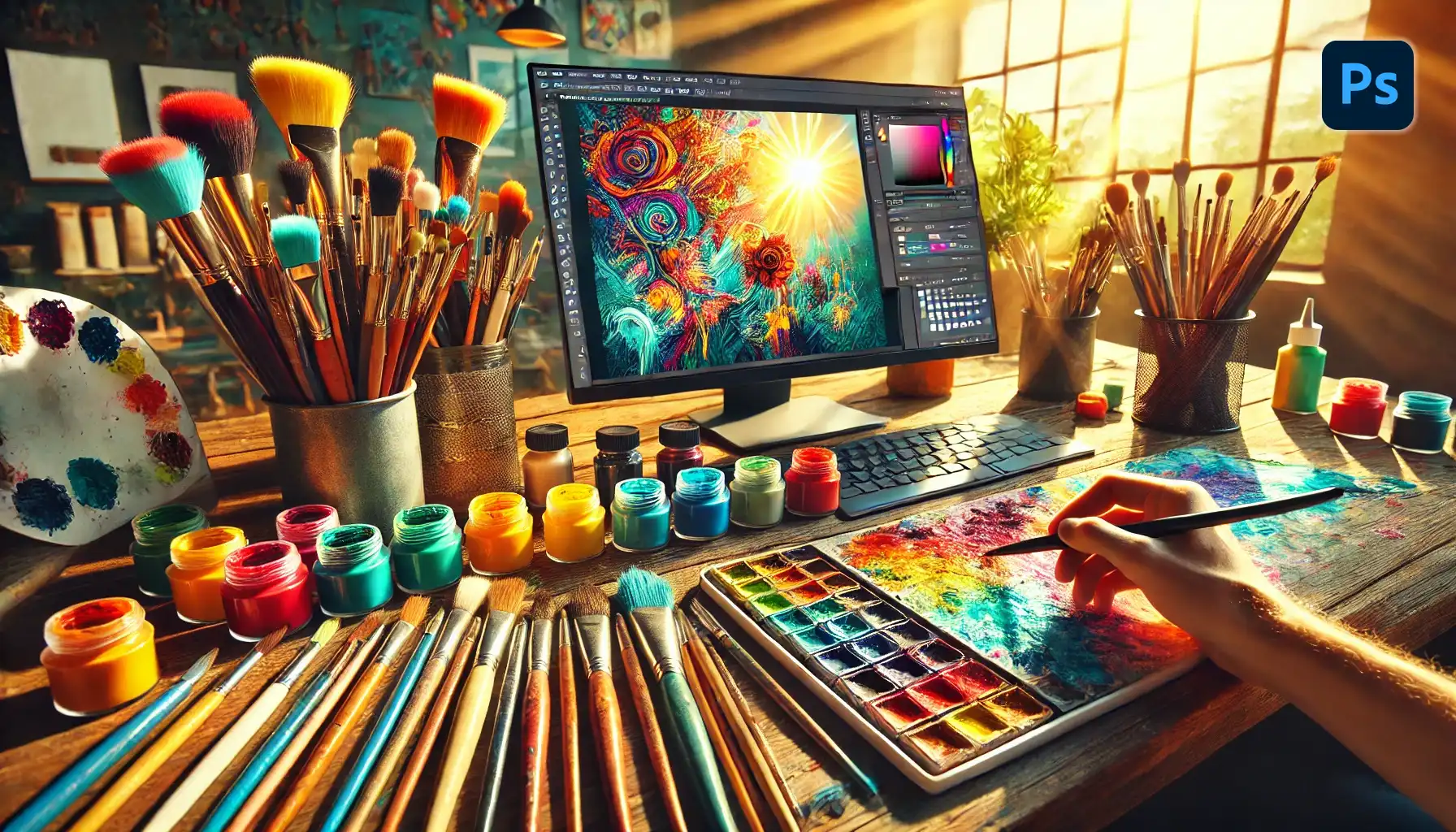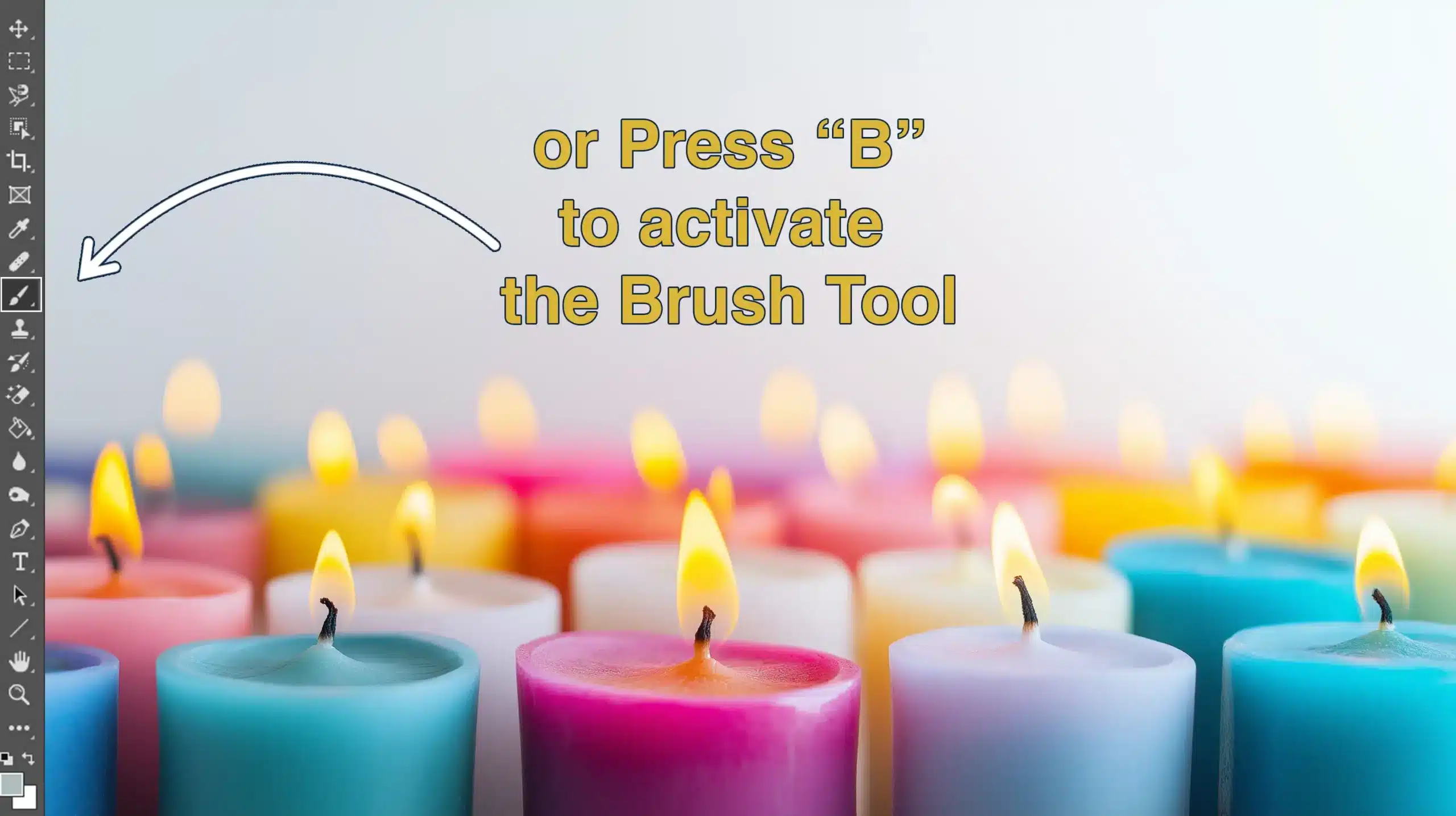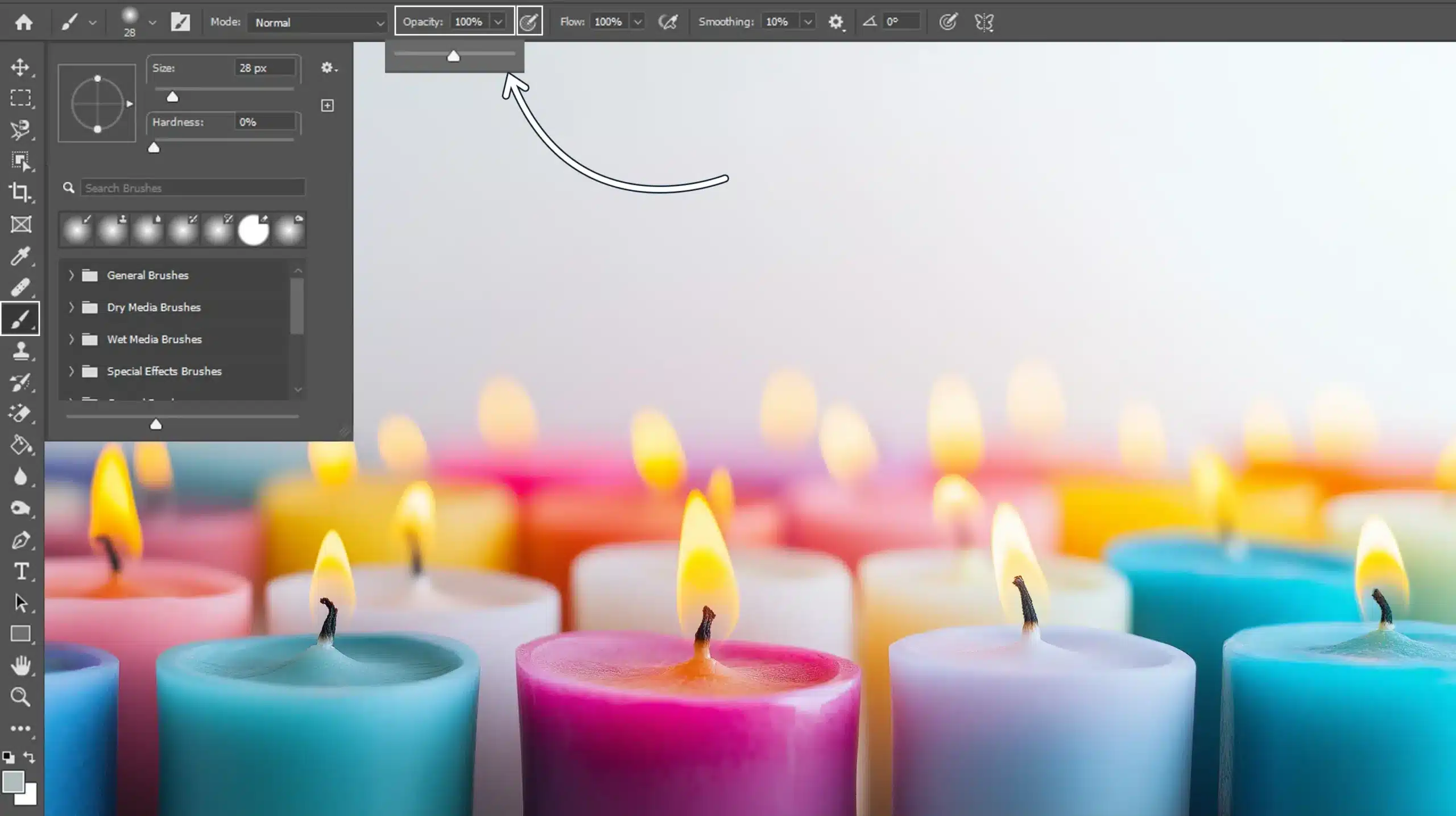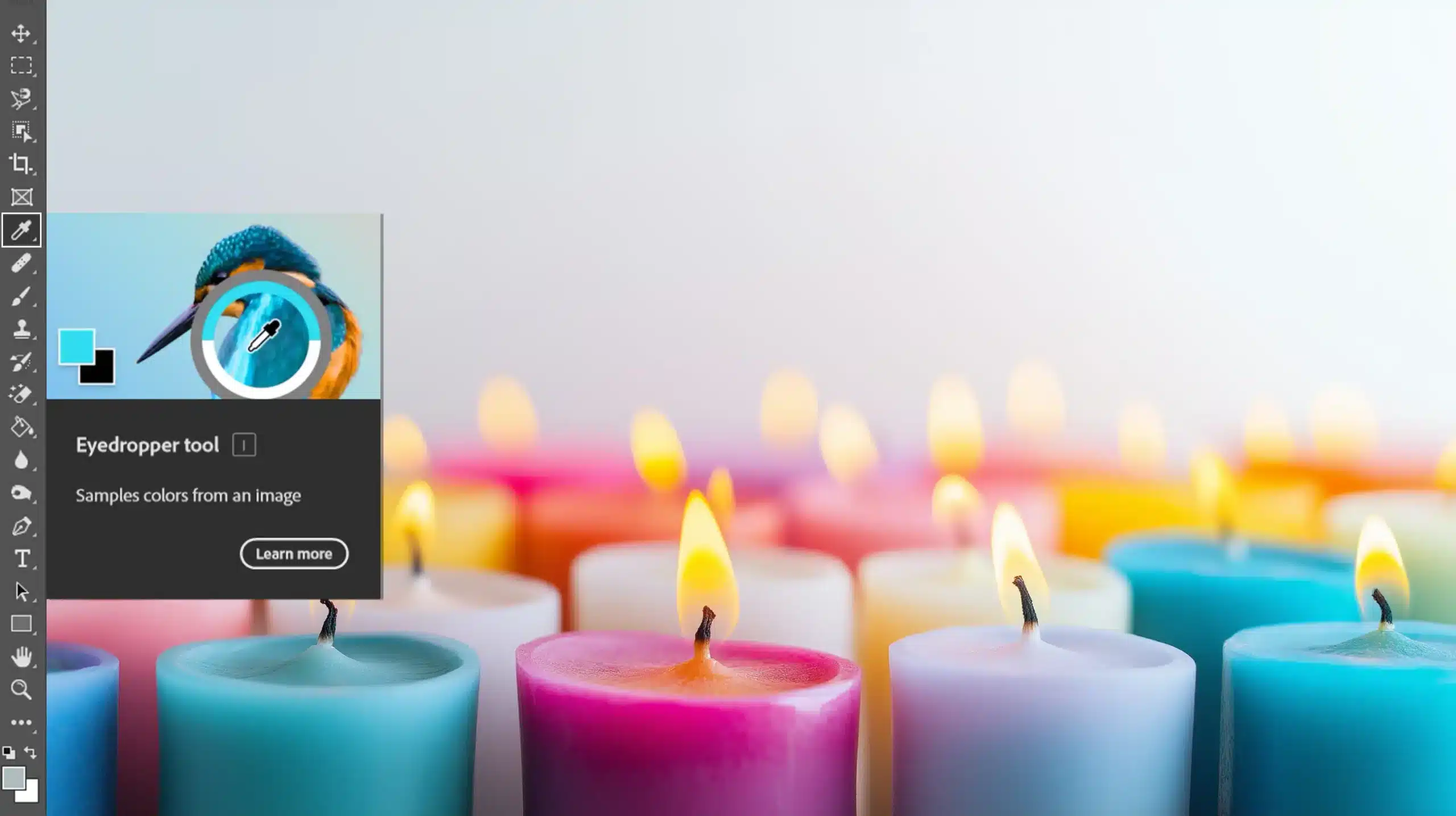
Are you ready to unleash your creativity and learn how to change brush color in Photoshop? If you’ve ever felt limited by the default colors and want to add a splash of personality to your digital artwork, you’re in the right place.
In this guide, I’ll walk you through the simple steps to customize your brush colors, transforming your projects from ordinary to extraordinary.
Whether you’re a beginner or a seasoned pro, mastering this skill will elevate your work to new heights.
Dive in and discover how changing brush color can open up a world of possibilities for your creative projects. Let’s get started!
Table of Contents
Understanding the Basics of Brush Tool
To effectively use the brush tool in Photoshop, it’s important to grasp its basic functions. One of the foundational aspects is understanding the foreground color, which determines the color your brush will apply to your artwork.
Let’s explore why this color is significant in your creative process.
Importance of Foreground Color
When you start using Adobe Photoshop, the brush tool might seem daunting. However, it’s quite straightforward once you explore its basic features.
Setting the Foreground Color
The foreground color is critical. It’s the color your brush uses to paint, similar to dipping your brush into a paint can. To set it:
- Look at the tools panel and find the color picker.
- Double-click it and choose your preferred color from the color palette.
- Change your artwork's appearance by altering the brush color. The foreground color always sits above the background color.
Changing Brush Color in Photoshop
To change brush color in Photoshop, understand the brush settings and select the right brush tip:
- With the brush tool active, look for the drop-down menu next to the brush icon in the tools panel.
- Control the opacity, size, and hardness to define your artwork's outcome.
Each element affects the style and impact of your brush strokes on the layers. You can also use the replace color tool in Photoshop to alter specific hues within your project.
Double-click any specific layer if you need to adjust the applied color. You can also apply similar techniques to add a stroke to a text in Photoshop for added emphasis.
Easily Change and Switch Colors
To quickly replace your brush color:
- Use the color picker for manageable color changes.
- Alternatively, use the eyedropper tool to sample elements from your existing image.
Each session starts with the default colors black (foreground) and white (background).
Learn to switch between them swiftly using the ‘X‘ key on your keyboard. With the brush tool active, there’s no better feeling than seeing your creativity blossom as you become more adept at using Adobe Photoshop effectively.
Pro Tip: Always save a version of your work before making major changes to your brush color or other settings. This gives you a safety net should you need to revert any edits.
If you’re curious about how to make a brush in Photoshop, experimenting with different settings can enhance your Photoshop painting effect.
Step-by-Step Guide: How to Change Brush Color in Photoshop
In this guide, you’ll learn how to change brush color in Photoshop. We’ll start by accessing the brush tool, which will allow you to customize your brushes and enhance your artwork with your chosen colors
Accessing the Brush Tool

Let’s get started with Photoshop. To change the brush color, simply locate the brush tool in the left panel of the workspace.
Click it (or press ‘B’ on your keyboard) and the brush tool is active.
Selecting the Desired Foreground Color

To change the brush color in Photoshop, focus on the foreground color. See those two overlapping squares at the bottom of the tools panel.
Double-click on the top one. The color picker window pops up. Use it to select any color you desire.
Applying the Brush Color Effectively

Now that you’ve selected your color, it’s time to paint. These techniques will help you transform your work into a true masterpiece. Press down on your canvas and watch as your selected brush color takes life.
Adjust the opacity in the settings if you want something see-through like a window.
- Different brushes create different looks. Check out brush tips using the drop-down menu in your settings. Wider, thin, soft or hard, each will give a unique stroke.
Photoshop gives you the power to customize and fine-tune every brush stroke.
Double-click anytime you feel like exploring new color territories within the same image or even trying various features with the color picker tool.
Pro Tip: Try using the keyboard shortcut ‘X‘. It lets you swap between foreground and background colors faster than you can click your fingers.
For more advanced editing, understanding the difference between Photoshop and Lightroom can help you decide which software best suits your editing needs.
Advanced Techniques for Changing Brush Color in Photoshop
In this section, you’ll learn how to easily change the color of your brushes using the Color Picker in Adobe Photoshop. This tool allows for precise adjustments, enhancing your creativity and control over your artwork.
Using the Color Picker for Precision

Choosing the right color is significant in any art. In Adobe Photoshop, the color picker serves as your guide, providing access to a wide color palette.
Open the color picker, select your desired hue, and see your brush strokes transform. Mastering these tools will bring uniqueness and precision to your artwork.
Exploring Color Dynamics for Changing Brush Color in Photoshop
Understanding color dynamics helps improve your brush color changes in Photoshop. Now, let’s explore some quick shortcuts for easy color switching.
Quick Shortcuts for Color Switching
When painting in Photoshop, the last thing you want is endless toggling between colors. Enter shortcuts!
The delightful combination of keystrokes. A swift ‘X‘ will switch between your background and foreground colors in an instant.
For even more efficiency, familiarize yourself with other essential Photoshop shortcuts to speed up your workflow.
Saving Custom Color Palettes
Frequent designs often use specific colors. You wouldn’t want to search for that subtle lavender shade every time, right? Saving a custom color palette simplifies the process. Just set your preferred options, then save them for later.
Layer Effects and Blending Modes
Layers, the base of Photoshop miracles. They’re more than just neat organization tools. Apply blending modes to add dimension and texture to your image.
Overlay, multiply, or dodge – each mode serves a different purpose.
Pro Tip: Use the layer effects to enhance depth, make your bruiser pop, or blend elements seamlessly with their surroundings.
If you’re looking to expand your skills, learning how to make sky edits in Photoshop can add stunning effects to your artwork.
You can also experiment with creating a Photoshop heart shape using these techniques for a unique touch.
Common Mistakes and How to Avoid Them: How to Change Brush Color in Photoshop
Ever felt like your brushes in Photoshop have a mind of their own? That’s probably because of a simple mistake. Let’s iron out some common issues together.
To help you navigate common challenges when changing brush color in Photoshop, this table below outlines the main mistakes and provides insights on how to avoid them.
| Aspect | Overview |
|---|---|
| Misunderstanding Brush Settings | Getting overwhelmed by features can lead to incorrect brush usage, such as changing size accidentally. |
| Incorrect Foreground Color Selection | Using the wrong foreground color can affect your artwork’s composition. |
| Using the Color Picker Tool | The color picker is a helpful tool that allows easy selection of the desired color. |
| Swapping Colors Quickly | Using the ‘X’ key allows for effortless switching between foreground and background colors. |
Misunderstanding Brush Settings
As you get familiar with Adobe Photoshop, it’s easy to feel overwhelmed by the many features. When the brush tool feels uncooperative, it’s often due to misunderstanding the settings.
Adjusting the brushes can be frustrating but beneficial. For instance, if you accidentally change the brush size, a small smiley might end up with a giant stroke.
So, adopt small adjustments:
- Explore the brush tips.
- Tap the settings and keep an eye on opacity.
Incorrect Foreground Color Selection
Imagine you’ve created an artwork but used the wrong brush color. Frustrating, isn’t it? The foreground color is important to your composition.
Embrace the color picker tool. It’s like having a box of crayons at your disposal. A double click reveals a wide range of hues.
If blue turns out to be unsuitable for the grass, don’t worry; you can easily change the brush color in Photoshop.
A quick tap of ‘X‘ lets you swap between foreground and background colors, making adjustments feel effortless.
Pro Tip: Always use layers. They create safety nets for your artistry, undoing errors efficiently. Make mistakes bold but reversible.
Frequently Asked Questions

What is the process of editing an existing brush in Photoshop?
- Open Photoshop and select the Brush Tool from the toolbar.
- Go to the Options bar at the top and click on the Brush Preset Picker.
- Choose the brush you want to edit.
- Click on the Window menu and select the settings to modify features like shape, angle, and spacing.
- Adjust the settings as needed, and use the brush on your canvas to see the effects.
How to switch paint colors in Photoshop?
- Select the Brush Tool or any other painting tool.
- Click on the Foreground Color box in the toolbar to open the Color Picker.
- Pick a new color by clicking on the desired area of the color spectrum or entering specific color values.
- Click OK to apply the new color.
What is the method for changing the history brush color in Adobe Photoshop?
- Open the History Panel by going to Window > History.
- Select the state or snapshot you want to use with the History Brush.
- Set the foreground color to the color you want to paint with.
- Select the History Brush Tool from the toolbar.
- Adjust the brush settings as needed and start painting the image to apply the new color.
How do you color brush strokes in Adobe Photoshop?
- Select the Brush Tool from the toolbar.
- Choose a brush from the Brush Preset Picker in the Options bar.
- Set the foreground color to the color you want your brush stroke to be.
- Adjust the opacity and flow in the Options bar if needed.
- Paint on the canvas to see the colored strokes.

Conclusion
Changing the brush color in Photoshop is a fundamental skill that can greatly enhance your creative projects. I remember when I first learned how to change brush color in Photoshop, it transformed my workflow with my brushes.
This simple technique opened up a world of possibilities, enabling me to bring my creative visions to life with more precision and flair.
If you’re eager to master this skill and explore other techniques, I highly recommend checking out my Photoshop Course and Lightroom Course. Both courses provide practical guidance and easy-to-follow tutorials that can help you enhance your photo editing skills.
Also, if you’re ready to get started with these powerful tools, consider visiting Adobe Photoshop and Adobe Lightroom to learn more about what they offer. Embrace these tools, and you’ll see your artistic potential rise.
Read more about Photoshop:















